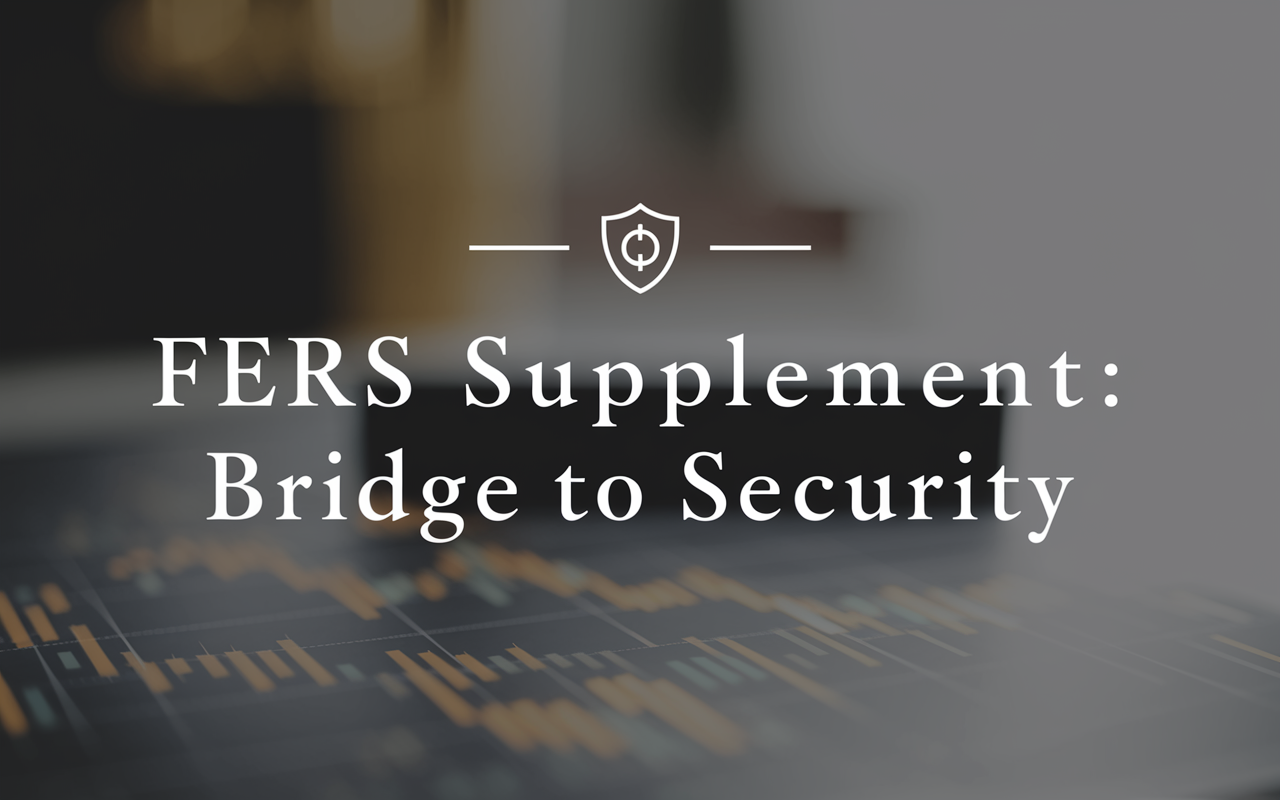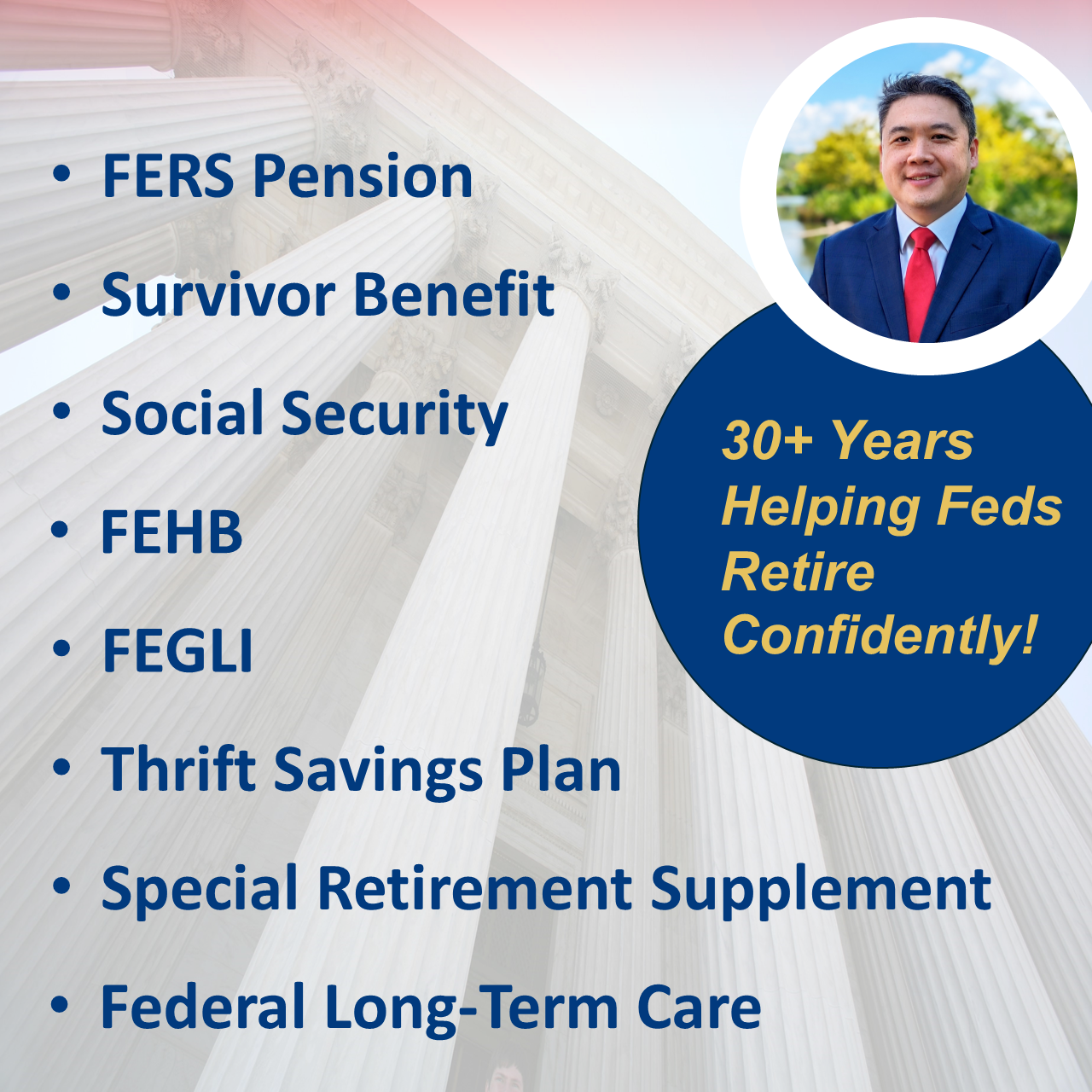FERS Supplement Unveiled: Your Bridge to Social Security
Imagine you’ve dedicated decades of service to our country—whether in a federal agency or in one of the uniformed services. As retirement nears, one dilemma might eclipse the excitement: How do you sustain your lifestyle until Social Security kicks in? The FERS Supplement, also known as the Special Retirement Supplement (SRS), offers a vital bridge, helping you retire with confidence before you reach the age for Social Security benefits. Understanding how it works, who can receive it, and how it integrates into your broader retirement plan can make all the difference in shaping a secure financial future.
For many federal and military employees, the FERS Supplement can feel like a hidden opportunity. It often doesn’t receive as much attention as other benefits, yet it fills a crucial gap, especially if you plan on retiring in your late 50s or early 60s. The Supplement can help cover everyday expenses, allow your investments more time to grow, and offer the peace of mind that comes from not having to claim Social Security early. It’s also automatic for those who qualify, but you’ll want to understand the rules and timing to leverage it fully. That’s what this discussion is all about—demystifying the FERS Supplement and showing you how it supports a confident retirement.
Understanding Eligibility Requirements
Eligibility for the FERS Supplement hinges on two main criteria: retiring before age 62 with an immediate, unreduced FERS annuity, and meeting certain service thresholds. Because it’s designed to approximate the portion of Social Security you earned while working in federal service, eligibility aligns closely with your Minimum Retirement Age (MRA) and years of service.
Federal employees generally qualify if they retire with at least 30 years of creditable service at their MRA, or with 20 years of service by age 60. There are special provisions, too. Certain law enforcement officers, firefighters, and air traffic controllers have more nuanced rules that allow them to qualify for an immediate retirement earlier, which in turn may let them draw the FERS Supplement sooner. However, if you retire at 62 or later, the FERS Supplement becomes moot because you’ll then be eligible for Social Security.
One of the first steps in understanding whether you qualify for the FERS Supplement involves finding out your personal MRA. The MRA depends on your year of birth. Here is an overview presented in a table for clarity:
|
Birth Year Range |
Minimum Retirement Age (MRA) |
|---|---|
|
Before 1948 |
55 |
|
1948 |
55 and 2 months |
|
1949 |
55 and 4 months |
|
1950 |
55 and 6 months |
|
1951 |
55 and 8 months |
|
1952 |
55 and 10 months |
|
1953–1964 |
56 |
|
1965 |
56 and 2 months |
|
1966 |
56 and 4 months |
|
1967 |
56 and 6 months |
|
1968 |
56 and 8 months |
|
1969 |
56 and 10 months |
|
1970 and after |
57 |
If you meet your MRA when you have a full 30 years of FERS service, you can immediately retire and qualify for the supplement. Alternatively, if you’re 60 and have 20 years of service, you’ll also be eligible. It’s worth noting that if you retire under the so-called MRA+10 (with fewer than 30 years of service), you don’t get the FERS Supplement.
How the FERS Supplement Is Calculated
At its core, the FERS Supplement mimics the Social Security benefit you would have earned during your FERS years, but without influencing when you actually claim your Social Security. The formula is straightforward—a fraction multiplied by the Social Security benefit you’d expect at age 62:
FERS Supplement = (Years of FERS Service ÷ 40) × Your Estimated Age 62 Social Security Benefit
If you hear someone call this the “FERS Annuity Supplement,” it’s the same benefit. Often, federal retirees want to see a ballpark figure of what they’ll get. While a truly precise number requires an exact calculation of your work history, the following table offers a simplified illustration:
|
Years of Service |
Est. SS Benefit at 62 |
Calculation |
Monthly Supplement |
|---|---|---|---|
|
30 |
$1,200 |
(30 ÷ 40) × $1,200 |
$900 |
|
25 |
$1,000 |
(25 ÷ 40) × $1,000 |
$625 |
Like Social Security, the supplement is closely tied to your actual work record. However, there’s a key distinction: no cost-of-living adjustment (COLA) applies to the FERS Supplement. If you’re receiving it for several years, say from age 57 to 62, don’t expect to see yearly increases. Also, purchased military service time often does not factor into this specific formula unless those years are fully credited as FERS years for the Social Security calculation. In that sense, you may want to run the numbers—or consult a professional—for clarity on your individual case.
If you’re looking for a “FERS Supplement Calculator,” you’ll often find free tools online. Just check for official or credible websites to ensure you’re getting a reliable figure. Most times, though, the Office of Personnel Management (OPM) will calculate the supplement when you file for retirement.
Duration, Earnings Test, and Taxation
Because the FERS Supplement is meant to cover the period after you retire until Social Security becomes available at age 62, it ends by the month before your 62nd birthday. For example, if you turn 62 in July, the last Supplement payment would come at the end of June.
Outside earnings are a crucial factor in whether you’ll actually receive the full amount. The supplement fades out if you earn above certain thresholds, applying a simple formula: for every $2 you make that’s over the earnings limit, $1 gets deducted from next year’s FERS Supplement benefits. This earnings limit changes slightly each year. Below is an example of some recent limits:
|
Year |
Earnings Limit |
|---|---|
|
2022 |
$19,560 |
|
2023 |
$21,240 |
|
2024 |
$22,320 |
|
2025 |
$23,400 |
Only earned income—such as wages or income from self-employment—counts toward this limit. Your pension, investment earnings, or other unearned income doesn’t affect the FERS Supplement. Be mindful, though, that any penalty for going over the threshold doesn’t reduce your current year’s supplement but rather shows up the following year.
In addition, the FERS Supplement is treated as taxable income. One key difference from Social Security is that up to 85% of Social Security might be taxed, whereas the FERS Supplement is fully taxable. This also means that if you withhold taxes from your pension, consider adjusting your withholding to account for the additional income from the Supplement.
Should You Retire Early to Access the Supplement—or Wait Until 62?
A big question for many is whether it’s better to retire as soon as you’re eligible for the FERS Supplement or to continue working until 62 (and possibly beyond). Retiring before 62 means you immediately tap into the supplement—this can be incredibly appealing if you’re eager to embark on life after federal service. Yet there are considerations:
-
At age 62, your FERS pension formula jumps from 1% to 1.1% per year of service if you have at least 20 years of service. Over a 20- or 30-year career, that 10% boost can be substantial in the long term.
-
Starting the FERS Supplement early can mean more years of bridging income, but you won’t receive a COLA adjustment on that portion.
-
Delaying retirement might also result in a higher Social Security benefit if you choose to work and continue paying into Social Security, although the FERS Supplement itself focuses on the portion of Social Security attributable to your federal service.
Below is a simplified look at how some of these factors might differ:
|
Retirement Age |
FERS Pension % (est.) |
Supplement Received? |
COLA Received Before 62? |
Net Outcome / Commentary |
|---|---|---|---|---|
|
60 |
1.0% × years of service |
Yes (if eligible) |
No |
Provides “bridge” income until 62 |
|
62 |
1.1% × years of service |
Not needed |
Yes, on the pension |
Higher annuity, immediate COLAs |
Everyone’s situation is different, and the decision to keep working or retire at MRA isn’t purely financial. Family considerations, health, life goals, and federal benefit changes all factor into that choice. What the FERS Supplement does is offer additional flexibility—you have the option to retire earlier without sacrificing an income stream. But you’ll want to balance that choice against the long-term benefit from continuing your federal career a bit longer to qualify for the 1.1% factor and potential COLAs on the pension itself.
Application Process and Next Steps
By design, there’s no separate application to receive the FERS Supplement. When you file your retirement paperwork with OPM, they automatically determine your eligibility based on the date and type of your federal retirement. If you meet all conditions, the supplement will kick in alongside your basic FERS annuity.
However, retirees who receive the FERS Supplement must report any earned income to OPM each year. This is how OPM decides whether to reduce the supplement the following year, based on how much you earned above the limit. As you plan your future workload—perhaps you anticipate working part-time—you’ll want to keep track of how that might affect the supplement’s reduction.
It’s best to think of the FERS Supplement not as a stand-alone benefit but as part of a bigger picture. Strategy matters. You might choose to forego large part-time earnings for a year to maximize your supplement. Or maybe your plan is to claim Social Security right at age 62, at which point the supplement disappears anyway. All these moving parts—pension, thrift savings plan (TSP) withdrawals, Social Security, and the FERS Supplement—should work in harmony.
That’s where personalized advice can really shine. If you’d like to learn more about how to integrate the FERS Supplement into your broader retirement strategy, sign up for one of our free Federal Retirement Planning Workshops. These sessions explore topics tailored to federal employees and often delve into important subjects like the timing of TSP withdrawals, handling annual income thresholds, and ensuring a smooth retirement income flow.
Key Considerations for Holistic Retirement Planning
Though the FERS Supplement can be a centerpiece of your income until 62, remember that it does not receive COLAs. If you expect to rely on the supplement for multiple years, you’ll want to budget accordingly. Cost-of-living increases may erode your purchasing power over time, so supplementing with your TSP or other resources might be essential.
If you consider postponing your Social Security benefits to age 70, the FERS Supplement can fill part of that gap for the years until 62. After that, additional income might come from part-time work or TSP withdrawals if you want to wait longer to maximize your eventual Social Security check. Another watch-out is the annual earnings limit. If you decide to keep working or launch a small business after leaving federal service, be mindful that going above the threshold could significantly reduce your next year’s FERS Supplement.
Continually revisiting your plan is crucial, because laws, limits, and personal circumstances can shift. The interplay of the FERS Supplement with your overall retirement assets should remain a living conversation—one that might include both your spouse’s retirement benefits and any other pensions or IRAs you hold.
Conclusion and Your Path Forward
The FERS Supplement stands as a bridge that helps federal and military employees step confidently into retirement before Social Security becomes available. By providing a monthly payment approximating the Social Security component of your federal service years, it preserves your financial freedom and allows you to consider retirement plans on your terms. From understanding the MRA thresholds and fulfilling eligibility requirements, to appreciating how the supplement is calculated and taxed, there’s a lot to piece together. Yet the payoff is worth it: the better you understand the system, the easier it is to coordinate all your retirement benefits for a secure, happy future.
Perhaps you’re weighing whether it makes sense to retire at your MRA or wait until 62 (or even later). Or maybe you’re exploring part-time work and want clarity on how earned income could erode the value of the supplement. Whatever your questions, remember you don’t have to figure it out alone. Our team at PlanWell has over 30 years of experience, plus specialized credentials such as ChFEBC, CFP, and AIF, which enable us to customize a Federal Retirement plan that accounts for all aspects of your situation. We pride ourselves on delivering the Fed-Expert Financial Blueprint, a thorough approach designed to address the unique circumstances of federal employees.
If you’re ready to delve deeper—perhaps you want help estimating your own supplement or coordinating your TSP withdrawals—consider joining one of our free Federal Retirement Planning Workshops. We’ll cover everything from timing your retirement date around your MRA, to implementing strategies that mitigate taxes, to handling that all-important earnings test. Growing old with financial confidence is about making the right moves now, and an intentional approach to the FERS Supplement can make a remarkable difference. Here’s to securing not just an income bridge, but a fulfilling retirement for the years ahead.










